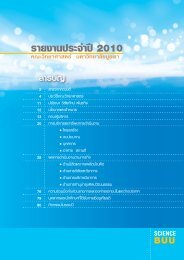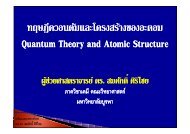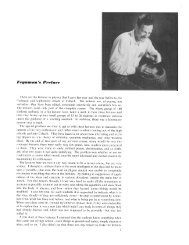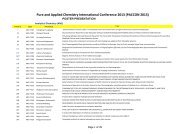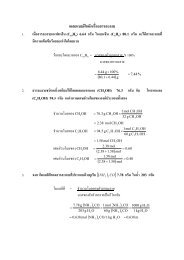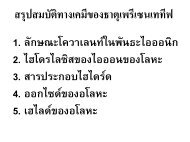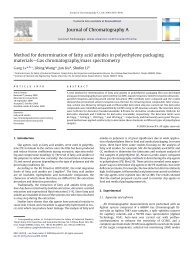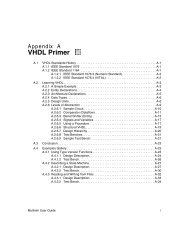USER MANUAL SWAN Cycle III version 40.72A
USER MANUAL SWAN Cycle III version 40.72A
USER MANUAL SWAN Cycle III version 40.72A
You also want an ePaper? Increase the reach of your titles
YUMPU automatically turns print PDFs into web optimized ePapers that Google loves.
58 Chapter 4<br />
2. In case of sharp angles in the obstacles, it is very likely that there are more than one<br />
crossing between two computational grid points. In this case <strong>SWAN</strong> does not give<br />
correct reflection results.<br />
• Avoid sharp angles in the obstacle definition.<br />
• If necessary, put corner point of the sharp edge exactly on line between two<br />
computational grid points, but not exactly on the grid point.<br />
3. At the boundaries of the computational area, the reflected spectrum is not taken into<br />
account. This can only be resolved by a different treatment of the boundaries in the<br />
program. Until this time, it is recommended to place obstacles at the inner area of<br />
the computational grid, not at or through the boundaries.<br />
The computation of transmission and reflection is problematic if an obstacle runs exactly<br />
through one or more grid points of the computational structured grid; <strong>SWAN</strong> will move<br />
the obstacle over a small distance (0.01 of the mesh size) if this occurs. Note that this will<br />
not be done in case of unstructured grids.<br />
The reflection results are incorrect if more than one obstacle crosses the same grid line<br />
between two neighbouring grid points. <strong>SWAN</strong> is not able to detect this, so the user must<br />
check if his model fulfills this condition.<br />
TRANSM with this option the user indicates that the transmission coefficient is a constant.<br />
[trcoef] constant transmission coefficient, formulated in terms of wave height, i.e. ratio<br />
of transmitted significant wave height over incoming significant wave height.<br />
Default: [trcoef]=0.0 (no transmission = complete blockage).<br />
DAM with this option the user indicates that the transmission coefficient depends on<br />
the incident wave conditions at the obstacle and on the obstacle height (which<br />
may be submerged).<br />
GODA with this option the user indicates to use the Goda/Seelig formula (1979) for<br />
computing transmission coefficient.<br />
[hgt] the elevation of the top of the obstacle above reference level (same reference<br />
level as for bottom etc.); use a negative value if the top is below that reference<br />
level. If this command is used, this value is required.<br />
[alpha] coefficient determining the transmission coefficient for Goda’s transmission formula.<br />
Default: [alpha]=2.6.<br />
[beta] another coefficient determining the transmission coefficient for Goda’s transmission<br />
formula.<br />
Default: [beta]=0.15.<br />
DANGREMOND with this option the user indicates to use the d’Angremond/Van der Meer formula<br />
(1996) for computing transmission coefficient.<br />
[hgt] the elevation of the top of the obstacle above reference level (same reference<br />
level as for bottom etc.); use a negative value if the top is below that reference<br />
level. If this command is used, this value is required.





